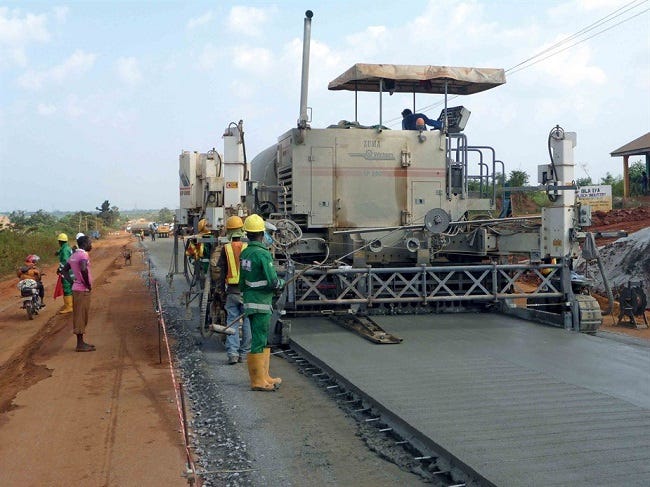
The Nigerian construction industry, a critical driver of economic development, faces numerous challenges and opportunities as it evolves. One of the most significant advancements in this sector is the integration of technology, which has the potential to transform construction practices, improve efficiency, and enhance project outcomes. Addressing technology integration in Nigerian construction is essential for modernizing the industry, boosting productivity, and achieving sustainable growth. This article explores the benefits, challenges, and strategies for effectively integrating technology into Nigerian construction practices.
The Imperative of Technology Integration in Nigerian Construction
Technology integration in construction involves the adoption of digital tools, software, and advanced technologies to streamline processes, enhance collaboration, and improve overall project performance. For Nigeria, addressing technology integration is crucial due to several factors:
a. Rapid Urbanization: Nigeria’s rapidly growing urban population demands innovative construction solutions to meet the increasing need for infrastructure, housing, and commercial developments.
b. Infrastructure Deficits: Addressing technology integration helps bridge infrastructure gaps by enabling more efficient and cost-effective construction methods, ultimately leading to improved infrastructure quality and sustainability.
c. Economic Growth: Modernizing construction practices through technology can drive economic growth by increasing productivity, reducing costs, and creating job opportunities in the technology and construction sectors.
d. Competitive Advantage: Embracing technology provides a competitive edge for construction firms by enhancing their capabilities, improving project delivery times, and ensuring higher quality outcomes.
Key Technologies Transforming Nigerian Construction
Several key technologies are transforming the Nigerian construction industry, each offering unique benefits and addressing specific challenges. Here’s an overview of some of the most impactful technologies:
1. Building Information Modeling (BIM)
a. What is BIM? Building Information Modeling (BIM) is a digital representation of the physical and functional characteristics of a building. It involves creating and managing 3D models that integrate architectural, structural, and MEP (mechanical, electrical, and plumbing) systems.
b. Benefits of BIM: BIM enhances project coordination, improves accuracy in design and construction, and facilitates better decision-making throughout the project lifecycle. It helps in detecting clashes early, reducing rework, and optimizing resource allocation.
c. Implementation in Nigeria: To address technology integration in Nigerian construction, BIM adoption can be promoted through training programs, industry standards, and collaboration among stakeholders.
2. Drones and Aerial Imaging
a. What are Drones? Drones, or unmanned aerial vehicles (UAVs), are used to capture high-resolution aerial images and videos of construction sites.
b. Benefits of Drones: Drones offer real-time site monitoring, progress tracking, and improved accuracy in surveying. They enhance safety by reducing the need for manual inspections and provide valuable data for project analysis and reporting.
c. Implementation in Nigeria: Incorporating drones into construction practices can be facilitated through regulatory frameworks, investment in drone technology, and training for personnel on drone operation and data analysis.
3. Smart Construction Technologies
a. What are Smart Technologies? Smart construction technologies include sensors, IoT (Internet of Things) devices, and automation systems that monitor and manage construction processes in real-time.
b. Benefits of Smart Technologies: These technologies improve efficiency, enhance safety, and provide valuable insights into construction site conditions. They enable predictive maintenance, real-time data analysis, and automated control of construction equipment.
c. Implementation in Nigeria: Adoption of smart technologies can be supported by investing in IoT infrastructure, fostering partnerships with technology providers, and integrating smart solutions into construction management systems.
4. 3D Printing and Prefabrication
a. What is 3D Printing? 3D printing involves creating physical objects by layering materials based on digital designs. In construction, it can be used to produce building components and even entire structures.
b. Benefits of 3D Printing: 3D printing offers rapid construction, cost savings, and design flexibility. It enables the production of complex shapes and customized components with reduced material waste.
c. Implementation in Nigeria: Promoting 3D printing and prefabrication can be achieved through pilot projects, collaboration with technology providers, and support for research and development in innovative construction techniques.
5. Construction Management Software
a. What is Construction Management Software? Construction management software includes digital tools and platforms that streamline project planning, scheduling, budgeting, and communication.
b. Benefits of Construction Management Software: These tools enhance project efficiency, improve collaboration among stakeholders, and provide real-time insights into project progress. They facilitate better management of resources, costs, and timelines.
c. Implementation in Nigeria: Adoption of construction management software can be encouraged through training programs, software investments, and integration with existing project management practices.
Challenges to Technology Integration in Nigerian Construction
Despite the significant benefits of technology integration, several challenges need to be addressed to ensure successful adoption in Nigerian construction:
1. Limited Access to Technology
a. Challenges: Limited access to advanced technology and high costs can hinder adoption. Many construction firms may lack the resources to invest in cutting-edge tools and equipment.
b. Solutions: Addressing these challenges involves seeking funding opportunities, government support, and partnerships with technology providers to make advanced technologies more accessible.
2. Skills Gap and Training
a. Challenges: There is a skills gap in the construction industry related to the use of advanced technologies. Many professionals may lack the necessary training to effectively use and manage new technologies.
b. Solutions: Providing comprehensive training programs, certifications, and workshops can help bridge the skills gap. Collaborating with educational institutions and technology providers can also enhance workforce capabilities.
3. Resistance to Change
a. Challenges: Resistance to change from traditional practices can impede technology adoption. Some stakeholders may be reluctant to embrace new technologies due to perceived risks or lack of understanding.
b. Solutions: Promoting awareness and showcasing successful case studies can help address resistance. Demonstrating the tangible benefits of technology integration and offering incentives for adoption can encourage change.
4. Regulatory and Compliance Issues
a. Challenges: Navigating regulatory and compliance issues related to technology use can be complex. Regulations may not always keep pace with technological advancements, leading to uncertainty.
b. Solutions: Engaging with regulatory bodies to develop and update regulations that support technology integration is essential. Ensuring compliance with existing regulations and seeking guidance from legal experts can help mitigate challenges.
Strategies for Effective Technology Integration
To successfully address technology integration in Nigerian construction, consider the following strategies:
a. Develop a Technology Roadmap: Create a technology roadmap that outlines the goals, timelines, and resources needed for technology adoption. This roadmap should align with the overall strategic objectives of the construction firm or project.
b. Invest in Technology Infrastructure: Allocate resources to invest in technology infrastructure, including hardware, software, and training. Prioritize technologies that offer the greatest potential for improving project outcomes and efficiency.
c. Foster Collaboration and Partnerships: Collaborate with technology providers, industry associations, and educational institutions to access expertise, resources, and support. Building partnerships can facilitate knowledge sharing and promote technology adoption.
d. Promote Training and Skill Development: Invest in training and skill development programs to ensure that personnel are equipped to effectively use and manage new technologies. Offer ongoing education and professional development opportunities.
e. Leverage Pilot Projects: Implement pilot projects to test and validate new technologies before full-scale adoption. Pilot projects provide valuable insights, help identify potential issues, and demonstrate the benefits of technology integration.
f. Monitor and Evaluate: Continuously monitor and evaluate the impact of technology integration on project performance. Use data and feedback to assess the effectiveness of technologies and make necessary adjustments.
Case Studies: Successful Technology Integration
Examining successful case studies can provide valuable insights into effective technology integration:
- The Eko Atlantic City Project: The Eko Atlantic City project in Lagos utilizes advanced technologies, including BIM and smart construction solutions, to manage complex urban development. The project demonstrates the benefits of technology integration in enhancing project coordination and efficiency.
- The Lagos Light Rail Project: The Lagos Light Rail project incorporates technologies such as construction management software and drones for progress monitoring. The project showcases the successful application of technology to improve construction processes and project management.
Conclusion
Addressing technology integration in Nigerian construction is essential for modernizing the industry, improving project outcomes, and supporting sustainable growth. By embracing technologies such as BIM, drones, smart construction solutions, 3D printing, and construction management software, the Nigerian construction industry can enhance efficiency, reduce costs, and achieve higher quality results.
Overcoming challenges related to technology access, skills gaps, resistance to change, and regulatory issues requires strategic planning, investment, and collaboration. By implementing effective strategies and learning from successful case studies, Nigerian construction firms and stakeholders can navigate the complexities of technology integration and build a more innovative and resilient industry.
As Nigeria continues to develop and expand its infrastructure, addressing technology integration will play a pivotal role in shaping the future of construction and driving the country toward a more advanced and sustainable construction sector.
. Technology Integration
. Building Information Modeling (BIM)
. Drones and Aerial Imaging
. Smart Construction Technologies
. 3D Printing
. Prefabrication
. Construction Management Software
. Infrastructure Deficits
. Project Efficiency
Contact Us
Chaman Law Firm today. Our offices are conveniently located in Lagos, FCT Abuja, Ogun State, and the UK. We are readily available to assist you with your legal needs. Whether you require consultation, representation, or ongoing legal support, Chaman Law Firm is your trusted partner.
Call us at 08065553671 or email us at info@chamanlawfirm.com to schedule a consultation.


